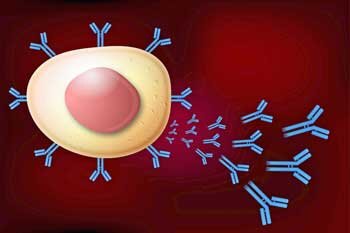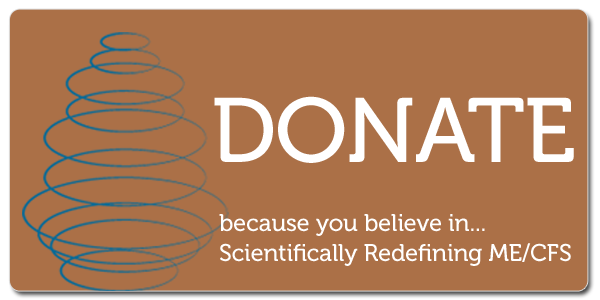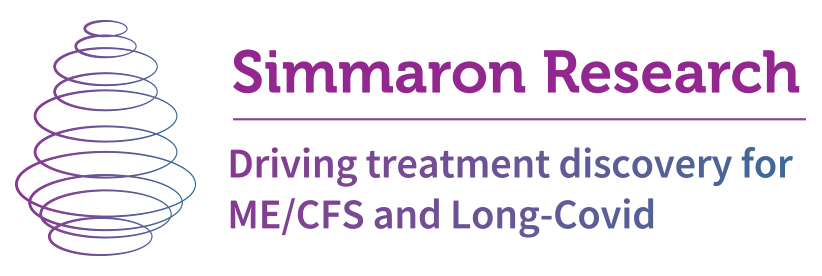Post Treatment Lyme Disease Unmasked? Immune Hole in the Illness Identified
It’s one of the bigger puzzles in medicine and one that has obvious implications for chronic fatigue syndrome (ME/CFS): why some people given oral antibiotics recover from Lyme disease while others sometimes remain sick for decades. Given the infectious trigger often seen in ME/CFS, any post-viral or post-bacterial illness is of interest. For the most part, researchers don't know why some people fail to recover fully from an infection; they’ve hardly touched the subject, but an answer in Lyme disease may be coming.
The Study
The study was not large, containing 32 patients and 18 healthy controls, but the results were exciting, providing for the first time a possible biological explanation for the puzzling problem of post-treatment Lyme disease syndrome (PTLDS). It's not taking away anything from the researchers that the study wasn't particularly innovative. In fact, it did something rather obvious, something that's been done and is being done in ME/CFS (by Lenny Jason). The study took people with early Lyme disease (n=32) and healthy controls (n=18) and then (after providing the standard antibiotic regimen) followed them over two years, measuring their immune status.The difference between this successful Lyme disease study and the less successful ME/CFS studies that measured cytokines, gene expression, and autonomic functioning is that the Lyme researchers had a clear target. Mouse studies have shown that the Borrelia burgdorferi bacteria that cause Lyme disease hammer the B-cells, and that's what the study focused on.
It's not taking away anything from the researchers that the study wasn't particularly innovative. In fact, it did something rather obvious, something that's been done and is being done in ME/CFS (by Lenny Jason). The study took people with early Lyme disease (n=32) and healthy controls (n=18) and then (after providing the standard antibiotic regimen) followed them over two years, measuring their immune status.The difference between this successful Lyme disease study and the less successful ME/CFS studies that measured cytokines, gene expression, and autonomic functioning is that the Lyme researchers had a clear target. Mouse studies have shown that the Borrelia burgdorferi bacteria that cause Lyme disease hammer the B-cells, and that's what the study focused on.
Results
We herein identify plasmablasts as a key B cell population that correlates with resolution of Bb infection and Lyme disease in humans. The authors
They found that B-cells called plasmablasts were elevated prior to antibiotic treatment in patients who returned to health. Plasmablasts are activated B-cells which circulate for a time in the blood in response to an infection. The higher level of plasmablasts in the recovered patients suggests that these patients simply mounted a stronger immune response to the infection. That was kind of a no-brainer, but the strength of the study was that they were able to specify what part of our amazingly complex immune system the problem was in.They also determined that the patients who returned to health also exhibited significantly greater clonal expansion: their activated B-cells produced more clones designed to target and get rid of the bacteria. Again, in retrospect, not a surprising finding, but one that does open up a possible treatment option that hasn't previously been available. Along the way this group also produced a possible diagnostic test which may a) be able to identify Lyme disease infections very early on and b) have high rates of accuracy. The current Lyme tests do neither; they're only about 50% accurate during the early stages of infection when studies show treatments are most effective.They also demonstrated that Lyme disease prompts the expansion of a type of memory B-cell (CD27−) associated with some infections and, more commonly, with autoimmune diseases (rheumatoid arthritis, lupus and multiple sclerosis).
Along the way this group also produced a possible diagnostic test which may a) be able to identify Lyme disease infections very early on and b) have high rates of accuracy. The current Lyme tests do neither; they're only about 50% accurate during the early stages of infection when studies show treatments are most effective.They also demonstrated that Lyme disease prompts the expansion of a type of memory B-cell (CD27−) associated with some infections and, more commonly, with autoimmune diseases (rheumatoid arthritis, lupus and multiple sclerosis).
Possible Therapy
Finally, the results point to an unexpected potential therapy - monoclonal antibody drugs. Monoclonal antibody drugs (the "mabs", e.g. Rituximab) can be theoretically designed to trigger the immune system to target any cell in the body or to influence how the immune system works in other ways. In cancer, for instance, many monoclonal antibodies have been produced that target specific cancer cells. In autoimmune diseases such as rheumatoid arthritis, Crohn's disease and ulcerative colitis, monoclonal antibodies bind to and inhibit the pro-inflammatory cytokine TNF-a.Over 75 monoclonal antibody drugs have been approved by the FDA. Only one, interestingly, specifically has targeted an infection (HIV). These drugs have, however, recently been effectively used in Ebola and syncytial virus infections.The authors suggested that Borrelia burgdorferi (Bb)-specific monoclonal antibodies could whack the bacteria hard enough to allow doxycycline to work in all patients, not just those with more robust B-cell responses. In fact, recent developments in monoclonal antibody production suggest that an anti-Lyme drug could be used prophylactically to provide protection against the bug. The limiting factor may be expense, but recent developments may bring the cost of these drugs down.
Prospecting in Chronic Fatigue Syndrome (ME/CFS)
This study indicates that prospective studies - studies which follow a population over time as some fall ill - can work really well if the study target is focused correctly. Starting back with Dr. Lloyd’s Dubbo studies several have been done in ME/CFS. None have achieved the results that this Lyme study did, but they have been illuminating.The Dubbo studies followed 253 people for 12 months after they were infected with one of three pathogens (EBV, Ross-River Virus, Coxiella burnetii). That 11% met the CDC criteria for ME/CFS after six months indicated that long standing illnesses after serious infections were surprisingly common. Attempts to figure out why a significant number of people remained ill were largely ineffective though.Some of the studies were quite small and are probably not conclusive but they suggested that neither increased herpes viral titers (herpes virus reactivation) nor changes in 35 cytokines nor gene expression nor psychological factors played a role. The only finding that initially stood out was the severity of the initial infection. People with more severe symptoms initially were significantly more likely to come down with ME/CFS. In 2008, however, the group found a possible genetic underpinning for the disease; it turned out that polymorphisms (unusual formations) in genes coding for two cytokines (IFN-y, IL-10) affected how ill a person got and how long they remained ill. The findings suggested that a genetic predisposition for an increased inflammatory response might be tipping some people over into prolonged illnesses.In 2009 Vollmer-Conna, a member of the Dubbo group, working outside ME/CFS found more evidence that one’s immune status makes a difference. She found immune status prior to surgery significantly affected one’s immune functioning, distress levels and ability to recover after surgery.Next Jason and Katz began a large study of adolescents that came down with infectious mononucleosis (IM). They found no evidence that reductions in peak work capacity, or activity levels, or problems with orthostatic intolerance, or reductions in salivary cortisol or natural killer cell number and function played a role in an adolescents inability to recover from IM. The study, however, did suggest that early damage to autonomic nervous system, to the ability to consume oxygen, as well as psychological factors and differences in cytokine networks were present in those who failed to recover from IM.Another Jason-Katz study which did not examine biological factors other than autonomic nervous system functioning found, as did the Dubbo study, that the severity of the initial infection – and the amount of bed rest it prompted – played the most significant role in who remained ill. Psychological factors such as “perceived stress, stressful life events, family stress, difficulty functioning and attending school, family stress, and psychiatric disorders” had no impact.In 2013 Jason, Katz and others began an even larger study which tracked college students after coming down with infectious mononucleosis. They’ve collected blood samples from and have been following over 4,000 college students over the past couple of years. About 5% contracted infectious mononucleosis, a common trigger for ME/CFS. Grants applications are being written to further assess autonomic functioning, as well as cytokine, metabolome and saliva biological risk factors..If Jason et. al. have picked the right target, this fascinating study could tell us more about what goes wrong when someone gets ME/CFS. If it doesn't then their samples - banked in liquid nitrogen at -80 degrees C - provide a potentially invaluable resource for the future.By capturing the blood of people with ME/CFS before they got sick, as they were getting sick and then after the illness became established, Jason's unique biobank could allow future researchers to quickly determine if the factor they believe plays a critical role in ME/CFS does - saving much time and money.Small Non-profit Potentially Makes Big DifferenceShowing that you don't have to be large to potentially make a major difference, this potential Lyme breakthrough came not from the NIH or the CDC but from a small Lyme non-profit - The Bay Area Lyme Foundation - that's been in business for just over five years. The study was the product of an 2014 award, The Bay Area Lyme Foundation Emerging Leader Award, that went to Lisa Blum, PhD, a former Stanford postdoc. That award specifically targets veteran researchers who have not previously worked in Lyme research.The Simmaron Research Foundation is another non-profit that is seeking to scientifically redefine how a disease is understood and treated. It is currently funding studies that are using proteomics and metabolomics to study cerebral spinal fluid in ME/CFS, that are assessing the effectiveness of underutilized treatments such as Ampligen, IVIG and Cidofovir, and that are seeking to understand why the rate of a lymphoma is increased in ME/CFS.
The only finding that initially stood out was the severity of the initial infection. People with more severe symptoms initially were significantly more likely to come down with ME/CFS. In 2008, however, the group found a possible genetic underpinning for the disease; it turned out that polymorphisms (unusual formations) in genes coding for two cytokines (IFN-y, IL-10) affected how ill a person got and how long they remained ill. The findings suggested that a genetic predisposition for an increased inflammatory response might be tipping some people over into prolonged illnesses.In 2009 Vollmer-Conna, a member of the Dubbo group, working outside ME/CFS found more evidence that one’s immune status makes a difference. She found immune status prior to surgery significantly affected one’s immune functioning, distress levels and ability to recover after surgery.Next Jason and Katz began a large study of adolescents that came down with infectious mononucleosis (IM). They found no evidence that reductions in peak work capacity, or activity levels, or problems with orthostatic intolerance, or reductions in salivary cortisol or natural killer cell number and function played a role in an adolescents inability to recover from IM. The study, however, did suggest that early damage to autonomic nervous system, to the ability to consume oxygen, as well as psychological factors and differences in cytokine networks were present in those who failed to recover from IM.Another Jason-Katz study which did not examine biological factors other than autonomic nervous system functioning found, as did the Dubbo study, that the severity of the initial infection – and the amount of bed rest it prompted – played the most significant role in who remained ill. Psychological factors such as “perceived stress, stressful life events, family stress, difficulty functioning and attending school, family stress, and psychiatric disorders” had no impact.In 2013 Jason, Katz and others began an even larger study which tracked college students after coming down with infectious mononucleosis. They’ve collected blood samples from and have been following over 4,000 college students over the past couple of years. About 5% contracted infectious mononucleosis, a common trigger for ME/CFS. Grants applications are being written to further assess autonomic functioning, as well as cytokine, metabolome and saliva biological risk factors..If Jason et. al. have picked the right target, this fascinating study could tell us more about what goes wrong when someone gets ME/CFS. If it doesn't then their samples - banked in liquid nitrogen at -80 degrees C - provide a potentially invaluable resource for the future.By capturing the blood of people with ME/CFS before they got sick, as they were getting sick and then after the illness became established, Jason's unique biobank could allow future researchers to quickly determine if the factor they believe plays a critical role in ME/CFS does - saving much time and money.Small Non-profit Potentially Makes Big DifferenceShowing that you don't have to be large to potentially make a major difference, this potential Lyme breakthrough came not from the NIH or the CDC but from a small Lyme non-profit - The Bay Area Lyme Foundation - that's been in business for just over five years. The study was the product of an 2014 award, The Bay Area Lyme Foundation Emerging Leader Award, that went to Lisa Blum, PhD, a former Stanford postdoc. That award specifically targets veteran researchers who have not previously worked in Lyme research.The Simmaron Research Foundation is another non-profit that is seeking to scientifically redefine how a disease is understood and treated. It is currently funding studies that are using proteomics and metabolomics to study cerebral spinal fluid in ME/CFS, that are assessing the effectiveness of underutilized treatments such as Ampligen, IVIG and Cidofovir, and that are seeking to understand why the rate of a lymphoma is increased in ME/CFS.
